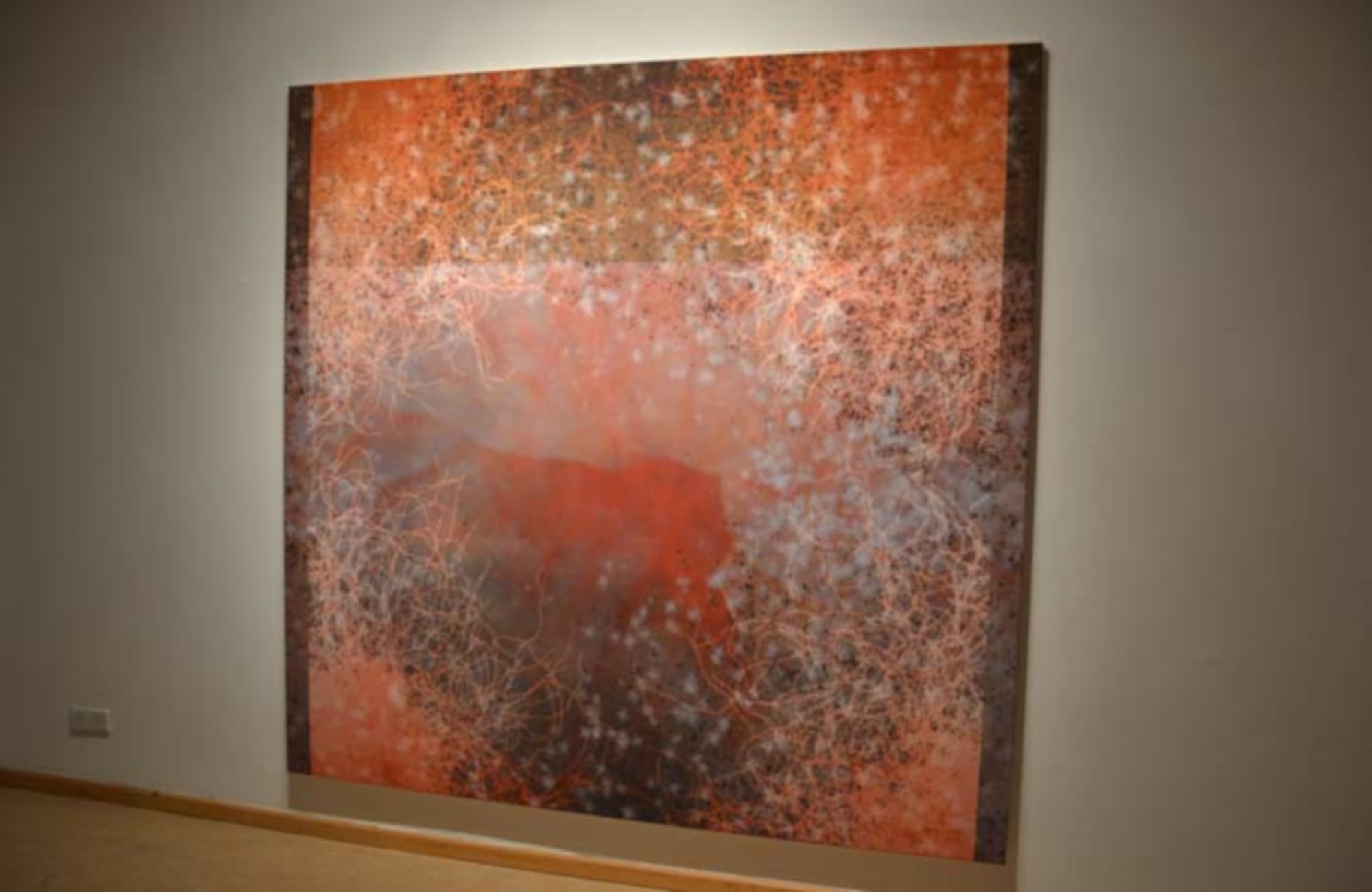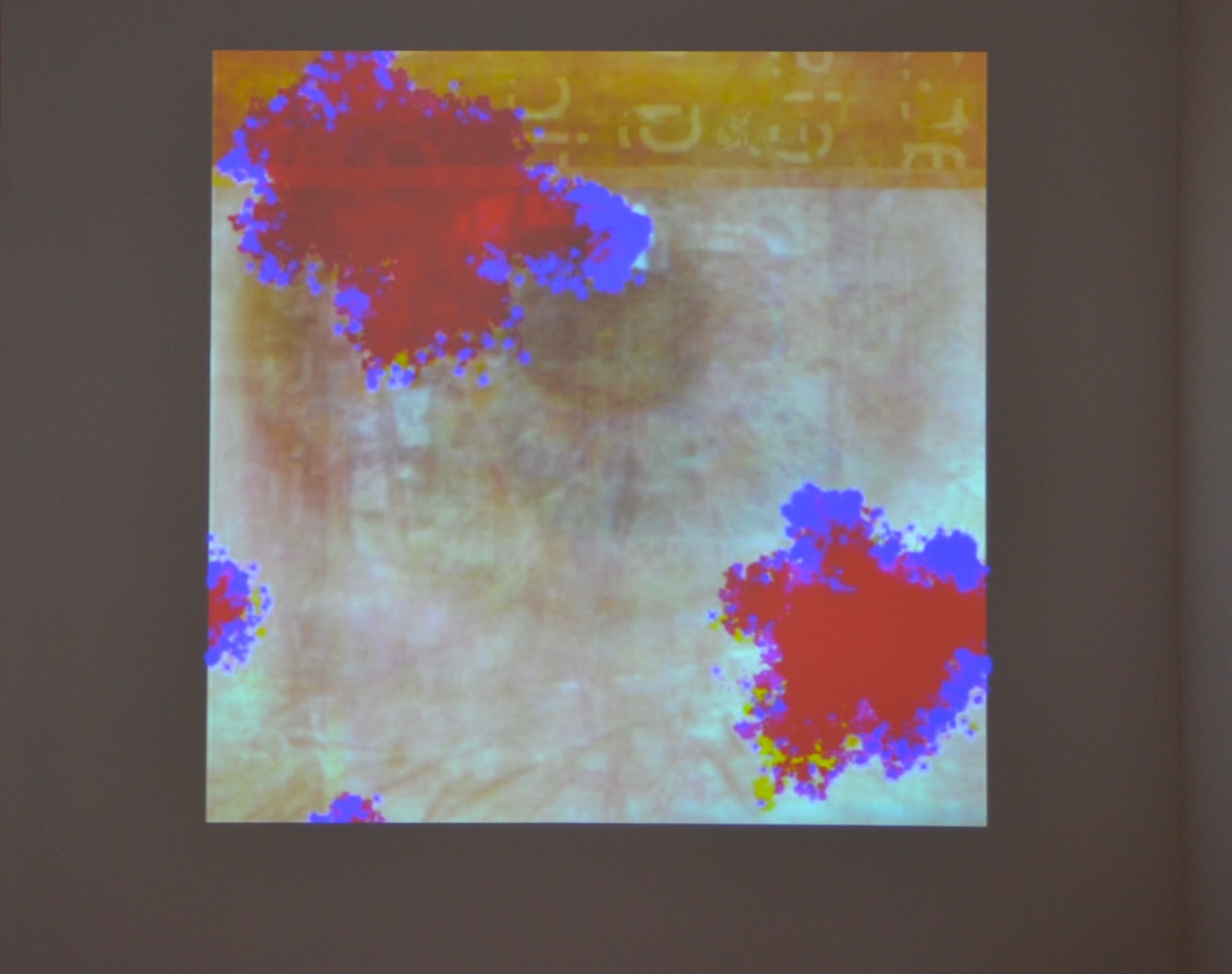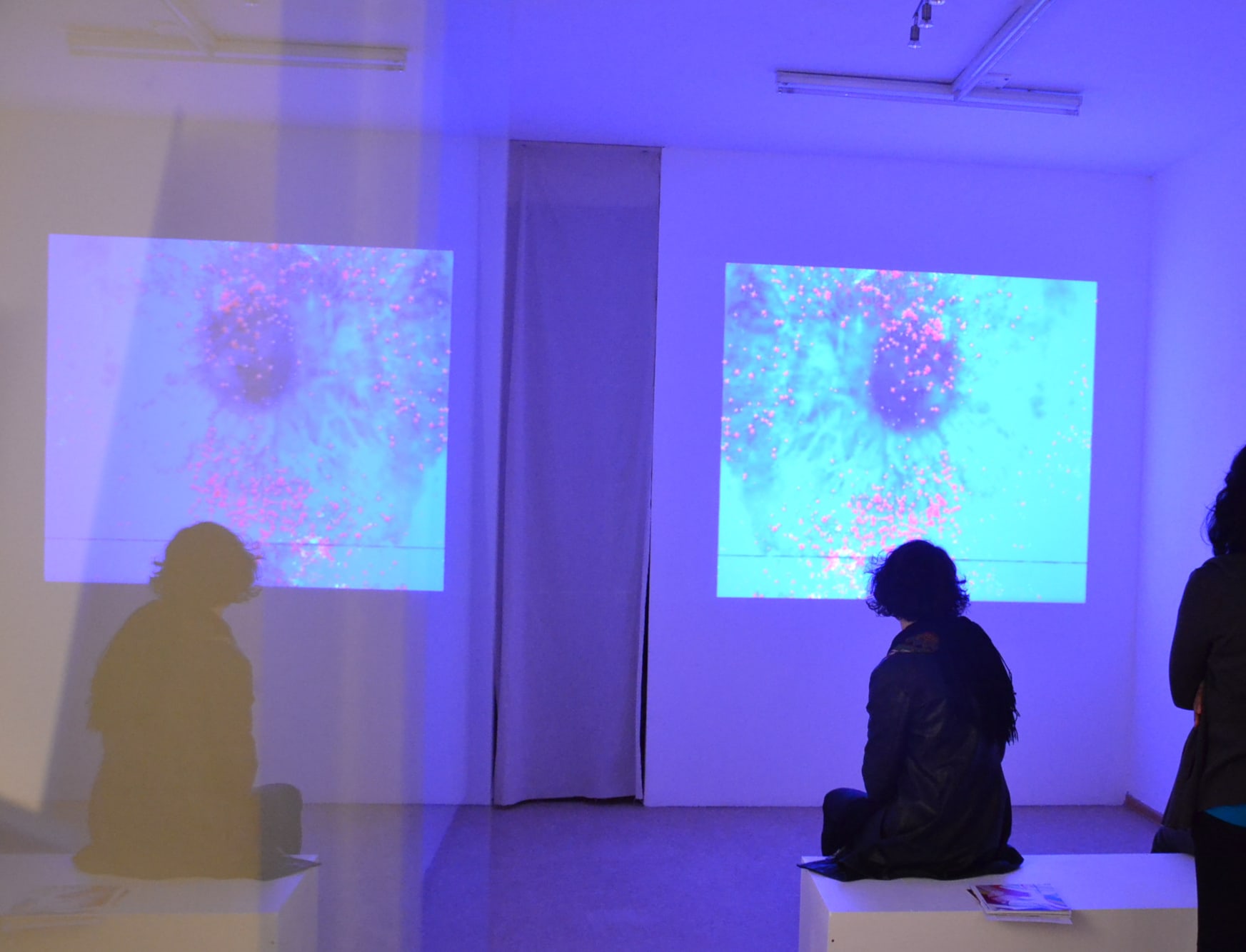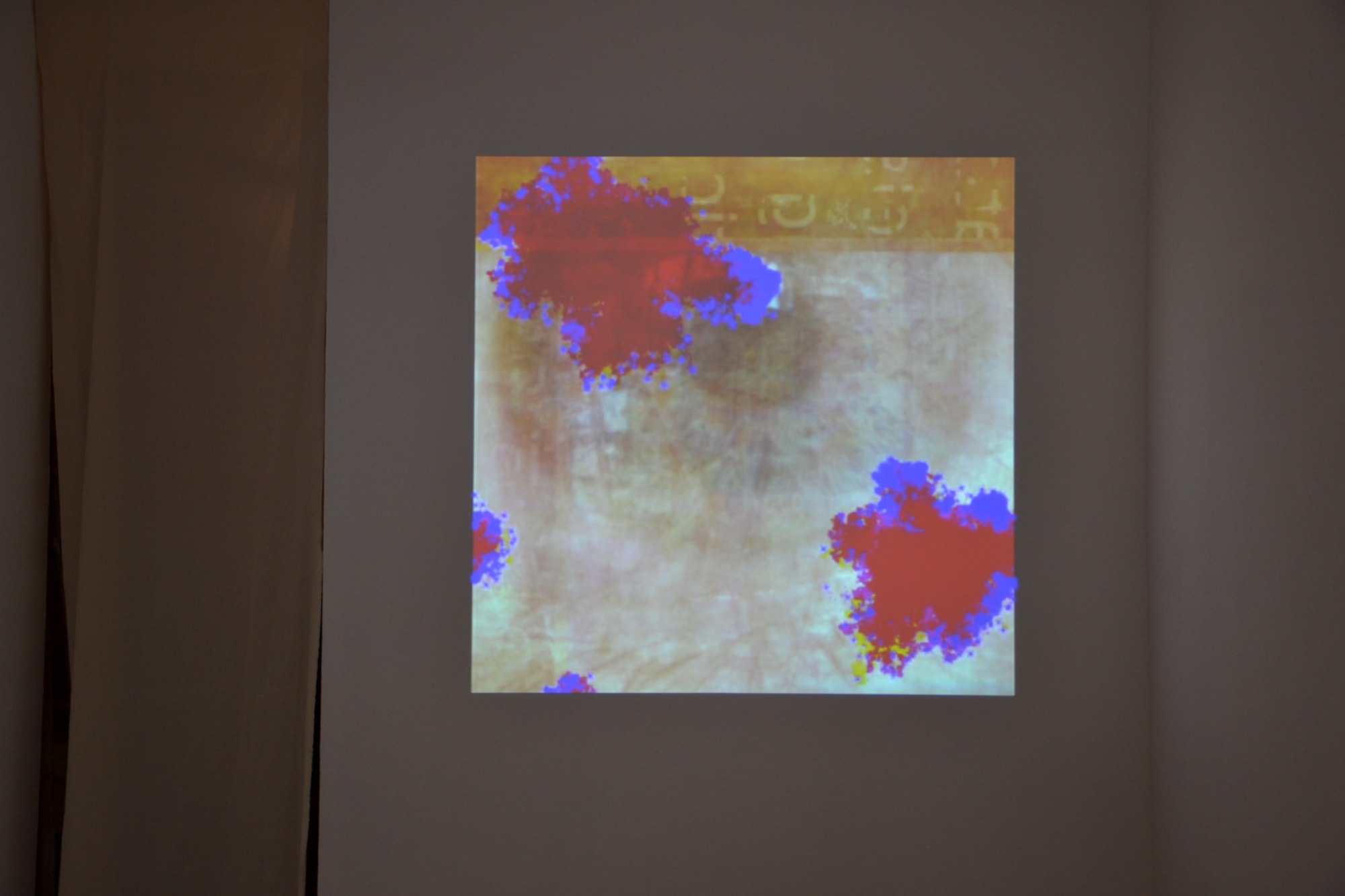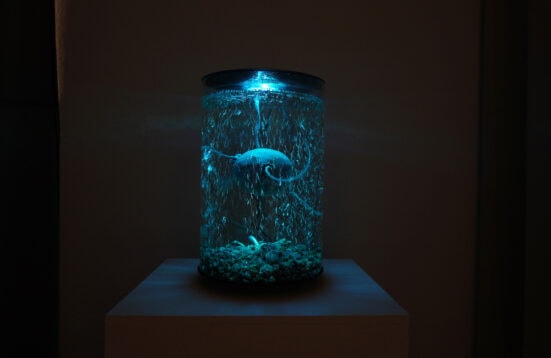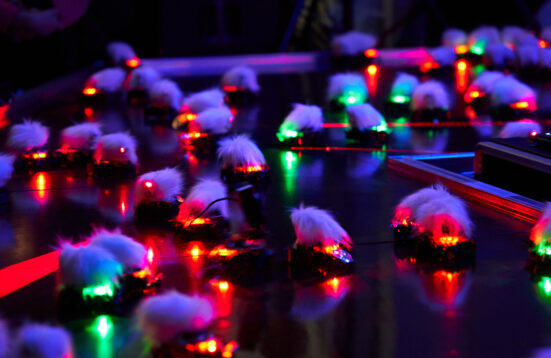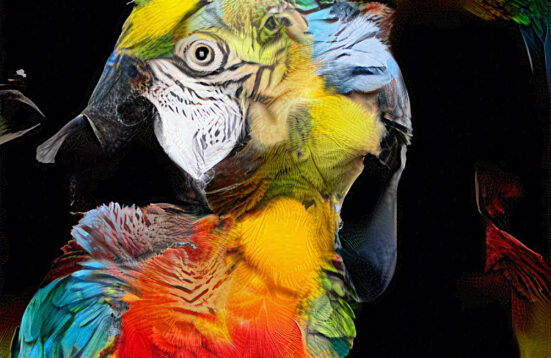bOdy pandemOnium
Immersion into Noise
Joseph Nechvatal
Joseph Nechvatal (born in 1951 in Chicago) is a post-conceptual artist working in digital art. He is one of the most important pioneers of ‘new media art,’ but at the same time makes use of ‘old media’ (such as painting and drawing). What is phenomenal, and in our opinion relevant to the 21st century, is that his paintings are created through a use of custom artificial life software and computer robotics.
The exhibition, with the subtitle Immersion into Noise, presents Nechvatal’s recent work to a Berlin audience alongside his eponymous book from 2011: Immersion into Noise. In that text, Nechvatal provides visual analogies to audio noise within the powerful effects of the act of immersion.
He does so by discussing visual and conceptual noise within the history of art and architecture; from Lascaux cave through Baroque art and Rococo architecture to modern and contemporary art. This publication was also the basis for the exhibition Noise at the 55th Venice Biennale (2013) which explored visual noise in contemporary art through an aesthetic of excess and immersion.
In the bOdy pandemOnium exhibition, and in Nechvatal’s work in general, the term viractualism, meaning the interface between the biological and the technological, plays an essential role: “The basis of the viractual conception is that virtual producing computer technology has become a noteworthy means for making and understanding contemporary art. This brings art to a place where one finds the merging of the computed (the virtual) with the uncomputed corporeal (the actual).“
Parallel to his theoretical research, Nechvatal has created a series of paintings and projections that show a C++ custom virus program (created with the programmer Stephane Sikora) invading, destroying and transforming his painterly art images based on intimate parts of the human body. In the exhibition at Art Laboratory Berlin, two large computer-robotic assisted paintings will be on display: frOnt windOw retinal autOmata (2012) and rear windOw curiOsites (2012), representing respectively the eye and rectum, the highest and lowest orifices on the human body.
The initial images were taken from online medical images, and work metaphorically on multiple levels: retinal vs cthonic, mind vs body, public vs private (here with particular reference to the politics of information). As the artist says of his work:”My digital paintings conjure up an enigmatic world that signals the dynamic critical intricacy of a contemporary practice engaged in the fragile wedding of image production and image resistance. Through my use of intimate human body parts under pressure from software, I hope to bring a subversive reading to computational media by presenting an artistic consciousness of the body that articulates concerns regarding surveillance, encryption, safety, privacy, identity and objectivity.“
The images are adapted by the artist, and then given over to random reworking by the C++ virus program. The result, also in the exhibition, is one of Nechvatal’s famous viral computer software ‘de-generative’ works: Viral Venture (2009), which is accompanied by a musical score for two hundred electric guitars by the composer Rhys Chatham. The paintings are created from stills taken from a screen capture of the ‘de-generative’ work.
On Saturday 25 April, at 2PM an artist talk along with a noise music concert of the artist’s piece 3 pOstmOrtems takes place within the exhibition.
Brief biography:
Since 1986 Joseph Nechvatal has worked with ubiquitous electronic visual information, computers and computer-robotics. His computer-robotic assisted paintings and computer software animations are shown regularly in galleries and museums throughout the world. From 1991-1993 he worked as artist-in-resident at the Louis Pasteur Atelier and the Saline Royale / Ledoux Foundation’s computer lab in Arbois, France on The Computer Virus Project: an experiment with computer viruses as a creative stratagem. In 2002 he extended that artistic research into the field of viral artificial life through his collaboration with the programmer Stephane Sikora.
Dr. Nechvatal earned his Ph.D. in the philosophy of art and new technology at The Centre for Advanced Inquiry in the Interactive Arts (CAiiA) University of Wales College, Newport, UK. From 1999 to 2013, Nechvatal taught at the School of Visual Arts in New York City (SVA). His archive is housed at The Fales Library (Downtown Special Collection) at N.Y.U. in New York City.
His book of essays Towards an Immersive Intelligence: Essays on the Work of Art in the Age of Computer Technology and Virtual Reality (1993-2006) was published by Edgewise Press in 2009. In 2011 his book Immersion Into Noise was published by the University of Michigan Library’s Scholarly Publishing Office in conjunction with the Open Humanities Press. His Punctum Press book/cd project (ed.) Minóy was published in 2014.
Curators: Regine Rapp & Christian de Lutz




